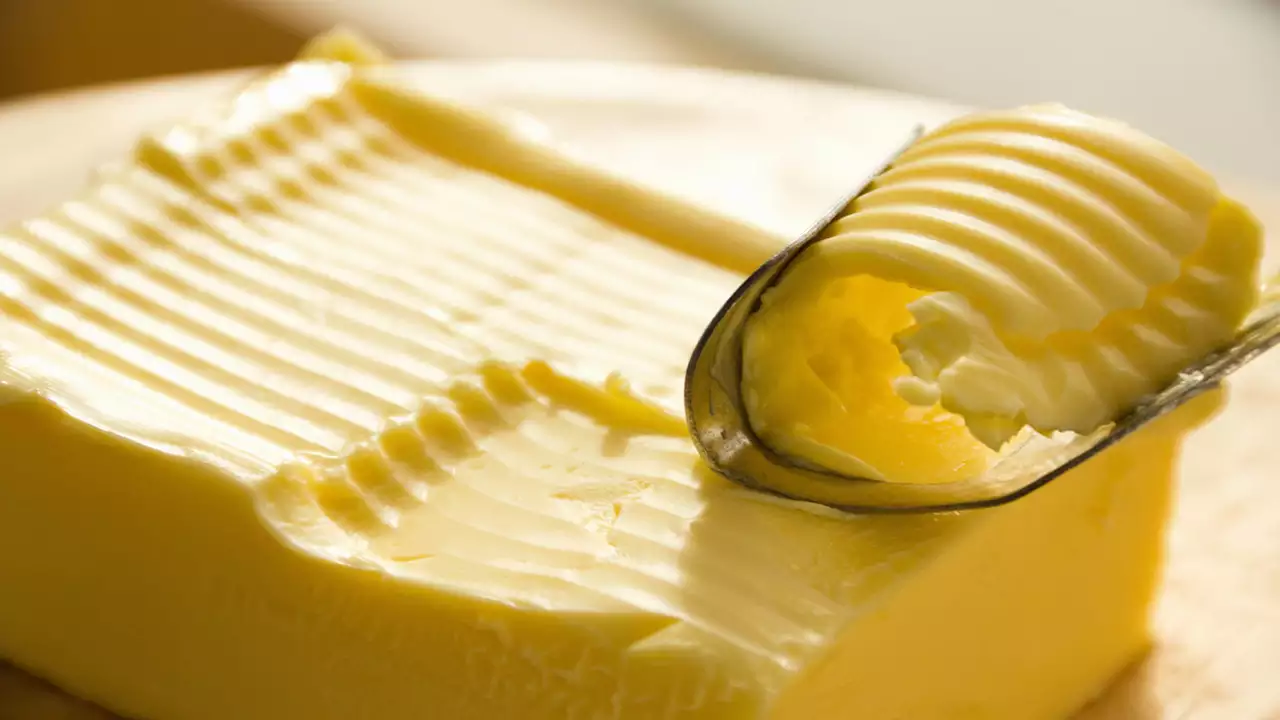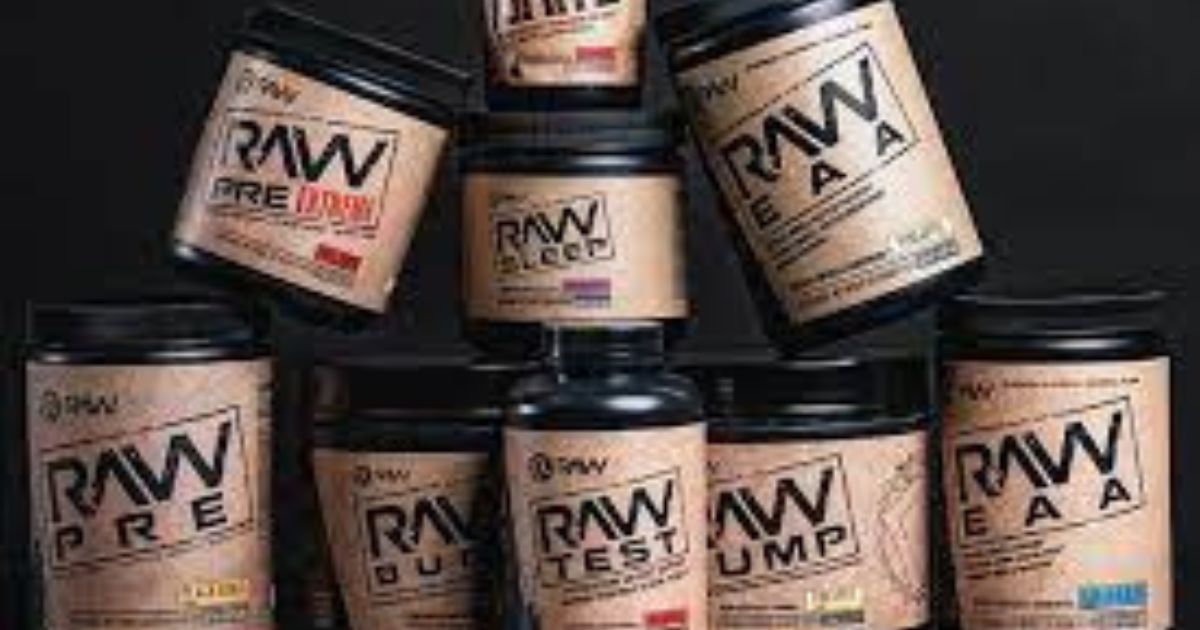Butter is a dairy product that contains high levels of saturated fats. It is a rich source of nutrients such as vitamin a, vitamin d, vitamin e, and vitamin k. butter also contains traces of minerals such as calcium, potassium, and magnesium, but is high in calories.
Butter is a staple ingredient in many households, and has been used for centuries in cooking and baking. It is made by churning cream or milk to separate the solid fats from the liquid. While butter is delicious and can add flavor to dishes, it should be consumed in moderation due to its high fat content.
In this article, we will explore the nutrition facts about butter and its possible health benefits and risks. We will also discuss some healthy alternatives for butter.

Credit: www.amazon.com
The Nutritional Content Of Butter
Discover The Surprising Nutrition Facts About Butter
Butter is a popular kitchen staple that adds flavor to our food. Despite its delicious taste, many people avoid butter because they think it’s unhealthy. Today, we’ll explore the nutritional benefits of butter and uncover some surprising facts that you may not have known.
Butter is a complex composition of various fats, water, and a small amount of protein. One hundred grams of butter contains approximately:
- 742 calories
- 81 grams of fat
- 2.3 grams of protein
- 0.06 grams of carbohydrates
- 0 grams of fiber
- 16 milligrams of calcium
- 0.5 milligrams of iron
The Role Butter Plays In Our Body
Butter is often avoided because of its high-fat content. However, the fats found in butter actually play an important role in our body.
- Saturated fats: Butter is a rich source of saturated fats, which can help promote healthy brain function and improve heart health.
- Butyrate: Butter contains a fatty acid called butyrate, which can improve gut health and reduce inflammation in the body.
- Vitamins: Butter is an excellent source of vitamins a, d, and k2, which support healthy vision, bone health, and blood clotting.
Nutrients Found In Butter That Are Beneficial To Our Health
Butter contains many nutrients that are beneficial to our health. Here’s a breakdown of some of the key nutrients found in butter:
- Vitamin a: Supports healthy vision and immune function.
- Vitamin d: Improves bone health and supports healthy immune function.
- Vitamin k2: Supports healthy blood clotting and improves bone health.
- Conjugated linoleic acid (cla): Improves heart health and can even help with weight loss.
- Butyrate: Improves gut health and reduces inflammation in the body.
How Butter Compares To Other Common Types Of Fat In Terms Of Nutrition
Butter isn’t the only type of fat that we consume. So, how does it compare to other common types of fat in terms of nutrition?
- Coconut oil: Higher in healthy saturated fats and beneficial for weight loss.
- Olive oil: Rich in healthy monounsaturated fats and can improve heart health.
- Canola oil: Higher in healthy monounsaturated fats and can improve cholesterol levels in the body.
Even though butter is high in saturated fat, it provides many essential nutrients that our body needs. Moderation is always key, but don’t be afraid to add some butter to your meals for a delicious and nutritious taste.
The Pros And Cons Of Eating Butter
The Controversial Debate About Butter And Its Effect On Our Health
Butter has been a debatable food item when it comes to health concerns. On one hand, it is rich in vitamins and healthy fats; on the other, it contains cholesterol and can be detrimental if consumed in large quantities. Here are some points to consider:
- Butter is a rich source of vitamins a, d, and k, which are vital for a healthy immune system, bones, and vision.
- Consuming too much butter can lead to high cholesterol levels, which can put you at risk of heart diseases.
- It has been linked to inflammation, which can be linked to several chronic diseases.
- Moderation is the key – consumption of a moderate amount of butter every day can be beneficial for health.
The Pros And Cons Of Eating Butter On A Regular Basis
Butter has been an indispensable part of many cuisines worldwide. While it has some health benefits, there are some downsides to consuming it regularly. Here are some points to consider:
- Pros of consuming butter include adding flavor to the food and being a great source of vitamins and healthy fats.
- Regular consumption of butter can lead to high cholesterol levels, which can put you at risk of heart diseases.
- Butter is high in calories, and regular consumption can lead to weight gain.
- Choosing grass-fed butter can increase the nutrition quotient significantly.
How Butter Can Fit Into A Healthy Diet
Many people believe that butter should be avoided when following a healthy diet. Butter can indeed be a part of a healthy diet if consumed in moderation. Here are some points to consider:
- Consuming grass-fed butter in moderation can be a part of a balanced diet.
- Substitute butter with olive oil or avocado oil when cooking food to reduce the intake of cholesterol.
- Use butter in small quantities as a flavor enhancer, and avoid consuming it as a primary food item regularly.
- Moderation is the key when it comes to butter – ensure that it doesn’t make up for a significant part of your daily calorie intake.
Butter can be a great addition to your diet if consumed in moderation. Keep in mind the pros and cons of consuming it regularly. Including butter in your diet is okay, but it is essential to maintain a balanced approach to your food consumption.
How Butter Is Made
The Process Of Making Butter: From Cream To Butter
Butter is made by churning cream until it separates into butter and buttermilk. The process of making butter can be done in at least two ways, but the most common method is to use a centrifugal separator. Here are the steps to make butter:
- The first step is to separate the cream from milk.
- The cream must be ripened by incubating it to let natural bacteria grow for around 15 to 20 hours.
- The next step is to churn the cream, either by hand or by using a machine, until the fat molecules clump and separate from the liquid buttermilk.
- Continue churning until the butter reaches the desired consistency and all the buttermilk has been removed.
- Lastly, the butter is usually washed with cold water to remove any remaining liquid buttermilk, and salt can be added for taste.
The Different Methods Of Butter Making And Their Importance
Butter can be made using different methods depending on the desired taste, texture, and quality. Here are some of the different methods of butter making:
- Cultured butter – this type of butter is created by adding live cultures of lactic acid bacteria to the cream, giving it a tangy flavor and slightly different texture. This process also helps to naturally preserve the butter for longer shelf life.
- Sweet cream butter – this type of butter is made from fresh cream and has a sweeter, milder taste.
- Clarified butter – this butter is made by melting it and then separating the milk solids and water from the butterfat, resulting in a pure, high-fat content product that can withstand high heat and has a longer shelf life.
The different methods of butter making are important because they can affect the taste, texture, and nutritional composition of the butter.
The Role Of Technology In Butter Making
Technology has significantly improved the butter-making process, making it more efficient, hygienic, and consistent. Here are some of the notable technological advancements in butter making:
- Centrifugal separators – this machine is used to separate the cream from milk, and it can separate the cream more precisely than other methods.
- Continuous butter making – this process involves using machines to continuously churn butter, which increases production efficiency and consistency.
- Quality testing equipment – modern technology allows for on-site quality testing of butter, ensuring that it meets the correct standards for hygiene and composition.
Technology plays a vital role in modern butter-making, ensuring the production of high-quality and safe butter for consumers.
Cooking And Baking With Butter
Butter is a staple ingredient in most kitchens and is used in various ways in cooking and baking. Whether it is to enhance the taste or texture of a dish, or to provide a rich and creamy base, butter is a versatile ingredient that has stood the test of time.
In this post, we will discuss the various ways to use butter in cooking and baking, the impact that it has on taste, texture, and overall quality of baked goods, measuring butter for recipes and using substitutes, as well as tips for using butter to enhance flavor.
The Various Ways To Use Butter In Cooking And Baking:
- Butter can be used as a cooking fat for sautéing vegetables or frying eggs.
- It can be used as a spread on toast or bread.
- Butter can be used as a finishing touch to a dish by melting it on top of steamed vegetables, potatoes, or grilled meats.
- It can be used in sauces and gravies to add a creamy and rich texture.
The Impact Of Butter On Taste, Texture, And Overall Quality Of Baked Goods:
- Butter adds richness and a creamy texture to baked goods.
- It contributes to the flakiness of a pie crust and the crumb of a cake or bread.
- Butter enhances the flavor of baked goods by adding a deep, buttery taste.
- When used in moderation, it can improve the overall quality of baked goods.
Measuring Butter For Recipes And Using Substitutes:
- Butter is typically sold in blocks or sticks with measurements written on the packaging.
- One stick or 1/2 cup of butter is equal to 8 tablespoons or 113 grams.
- When using butter in recipes, it should be at room temperature for optimal mixing and incorporation.
- Substitutes for butter can include margarine, shortening, or coconut oil, but the texture and flavor of the baked good may be altered.
Tips For Using Butter In Cooking And Baking To Enhance Flavor:
- When browning butter, be sure to watch it closely as it can quickly turn into burnt butter.
- Incorporating cold butter into pie crusts and biscuits can result in a flakier texture.
- Adding butter to rice or grains before cooking adds richness and depth of flavor.
- For a decadent topping for pancakes or waffles, mix melted butter with maple syrup.
Butter is a versatile ingredient that can be used in various ways in cooking and baking. When used in moderation and with proper understanding of measurements and substitutes, butter can enhance the flavor and texture of dishes. Be sure to experiment with different uses of butter in your recipes to see how it can elevate your cooking and baking to the next level.
Frequently Asked Questions On Nutrition Facts About Butter
How Many Calories Are In Butter?
Butter is high in calories, with about 100 calories per tablespoon. So, it’s important to consume butter in moderation to prevent weight gain.
Is Butter High In Saturated Fat?
Yes, butter is high in saturated fat, which can increase cholesterol levels and increase the risk of heart disease. Consuming too much saturated fat can have negative health effects.
Can Butter Be Part Of A Healthy Diet?
Butter can be incorporated into a healthy diet in moderation. Used in small quantities, it can add flavor to meals. It’s important to balance the intake of butter with other fats and oils.
Is There Any Nutritional Value In Butter?
Butter is a good source of vitamin a, vitamin e, and vitamin k2. It also contains healthy fatty acids that can provide the body with energy. However, it is high in calories and saturated fat, so it should be consumed in moderation.
Can Butter Be Substituted In Recipes?
Yes, butter can be replaced in many recipes with other ingredients such as olive oil, coconut oil, or avocado. Each substitute will provide a different flavor and texture, so it’s important to choose the right one based on the recipe and your preference.
Is Organic Butter Healthier?
Organic butter is made using milk from cows that have not been treated with antibiotics or hormones. This can make it a better choice for those looking to reduce their exposure to these chemicals. However, organic butter is not necessarily healthier in terms of its nutrient content.
Conclusion
All in all, butter, when consumed in moderation, can be a healthy and tasty addition to one’s diet. While it is high in saturated fats, it also contains a plethora of vitamins and minerals that can benefit the human body.
Its vitamin a and e content can aid in maintaining healthy skin and vision, and its butyric acid content can help reduce inflammation and improve gut health. However, it is important to be mindful of portion sizes and combine butter with a balanced diet and regular exercise.
Additionally, it is vital to understand that not all butter is created equal, and opting for organic and grass-fed options can maximize its nutritional benefits. So, whenever you crave a buttery treat, enjoy it guilt-free knowing that when consumed responsibly, it can be part of a healthy lifestyle.




